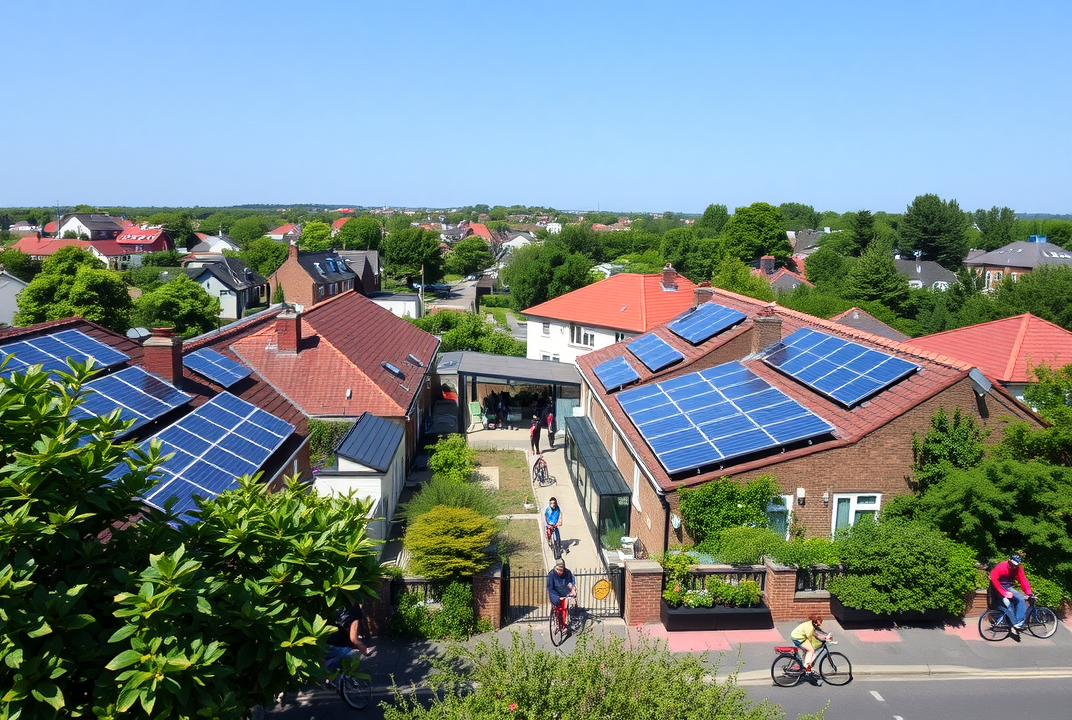The Transformative Effects of Sustainable Development on Urban Communities

Sustainable Development: A Pathway to a Better Urban Future Imagine a city where green spaces thrive, air pollution dwindles, and the community flourishes through vibrant economies and social equality. This is not a futuristic fantasy; it's the vision sustainable development aims to bring to life in urban communities around the globe. But how exactly does this transformation take place? Let’s unpack this together.
Sustainable development refers to practices that meet the needs of the present without compromising the ability of future generations to meet theirs. The term may sound like a buzzword, but its implications are profound and far-reaching. Implementing sustainable development in urban areas means rethinking how cities are built and operated, ensuring social, environmental, and economic balance.
So, what should you expect as you navigate through this article? We’ll dive into the significance of sustainable development, explore its positive impacts on urban communities, examine challenges that hinder its progress, and highlight actionable steps we can all take to encourage this transformative journey.
Why Sustainable Development Matters in Urban Areas
Have you ever stopped to ponder why urban areas are pivotal in the push for sustainable development? Over half the world's population now lives in cities, and this number is rising. Urban regions are the epicenters of human activity, and unsurprisingly, they also account for significant environmental challenges such as air pollution and waste management.
Addressing these issues through sustainable development not only promises to curb harmful environmental impacts but also enhances the quality of life for urban dwellers. Imagine living in a city where efficient public transport reduces traffic jams or where renewable energy powers your home – isn't that a world we should strive for?
The Ripple Effects of Green Living
Implementing sustainable practices in urban planning leads to a chain of positive ripple effects. It begins with green infrastructure, such as parks and urban forests, which improve air quality and boost the mental well-being of residents.
Moreover, embracing green construction techniques reduces energy consumption and lowers emissions. Implementing bicycle lanes and pedestrian paths promotes physical activity and reduces reliance on cars, contributing to healthier lifestyles.
Community Engagement: The Heartbeat of Sustainability
No discussion on sustainable development is complete without emphasizing the essential role of community engagement. Real change occurs when communities come together with a united purpose. Citizens, local governments, and organizations must collaborate to design and implement sustainable strategies.
Take the example of urban community gardens. These spaces provide fresh produce, foster a sense of community, and can even cut down on food miles. Engaged communities actively participating in sustainability enhance civic pride and drive long-term change.
The Environmental Impact: A Greener, Healthier Tomorrow
While urbanization often brings environmental challenges, integrating sustainable development strategies offers a promising solution. By focusing on renewable energy sources such as solar and wind, cities can drastically cut down on carbon emissions.
Imagine a future where energy-efficient buildings adorned with solar panels line every street—a transformation that's not just beneficial for the environment but economically wise, saving money on energy costs in the long run.
Case Studies and Success Stories
Cities across the world are already setting outstanding examples. Take Copenhagen, a city that’s on its way to becoming carbon-neutral by 2025. Implementing extensive cycling infrastructure and investing in wind energy are at the core of their success.
Then there’s Singapore, a city-state renowned for its green initiatives like vertical gardens and rainwater harvesting systems. Such initiatives are providing a blueprint that other cities can follow.
Overcoming Challenges: A Call to Action
But the road to fully sustainable urban communities is not without obstacles. Issues like financial constraints, political hurdles, and lack of awareness can stall progress. What can we do about this?
Remember, each one of us plays a vital role. Supporting policies that prioritize sustainable development, participating in community clean-ups, or even just reducing individual carbon footprints can make a sizable impact. Talk to peers, engage in public discourse, and champion sustainable initiatives within your community.
Conclusion: Stepping into a Sustainable Future
Sustainable development lays the foundation for urban communities that not only thrive but also cultivate a healthier relationship with the environment. Recognizing the power we hold, both as individuals and collectively, is pivotal. So why wait? Begin this transformative journey today. Let's work together to create urban spaces that stand as beacons of sustainability for future generations.
Every decisive action counts. Are you ready to make a change? Get involved, stay informed, and take steps towards building a sustainable legacy today.

